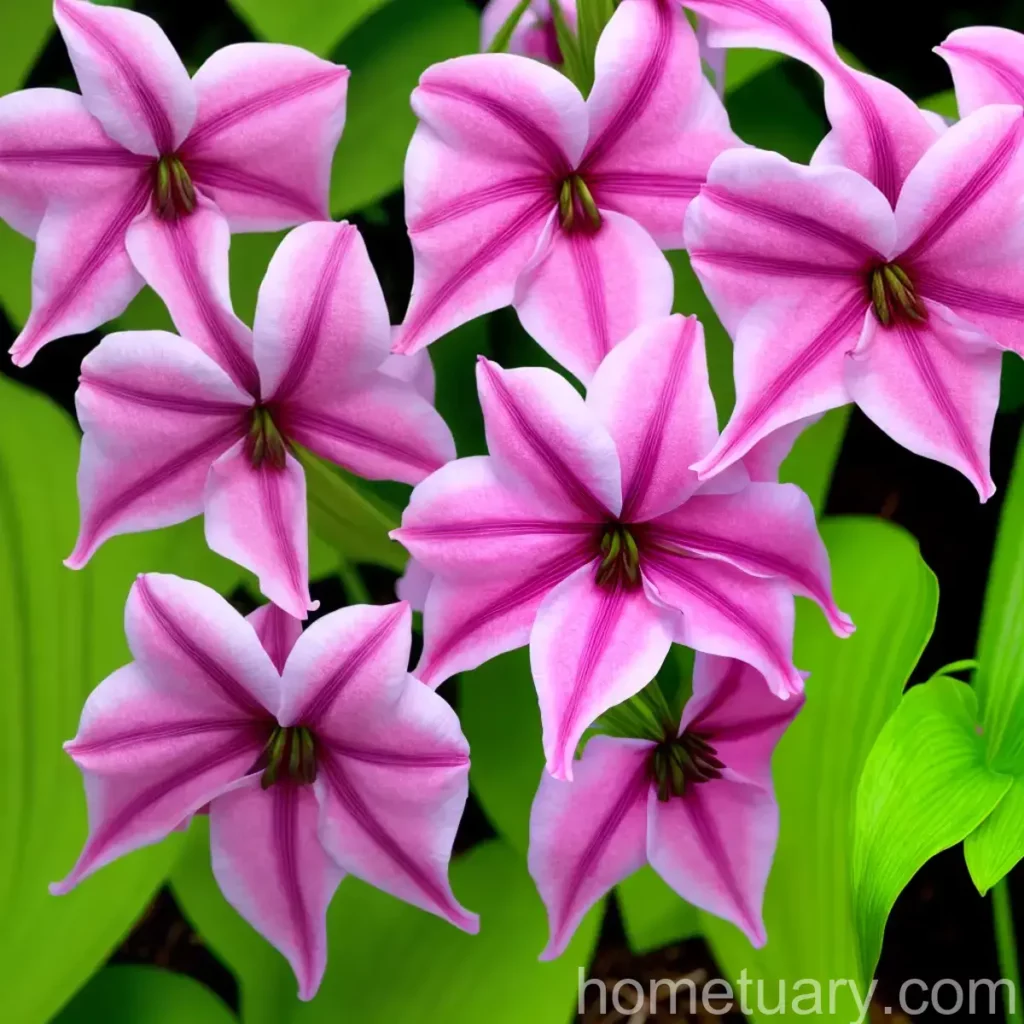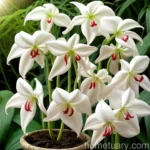Syngonium ‘Trileaf Wonder’ (Syngonium Podophyllum ‘Trileaf Wonder’): A Comprehensive Care Guide
Syngonium ‘Trileaf Wonder’, scientifically known as Syngonium Podophyllum ‘Trileaf Wonder’, is a popular houseplant cherished for its striking foliage and ease of care. With its unique aesthetic appeal and air-purifying qualities, this plant has captured the hearts of plant enthusiasts and beginners alike. In this in-depth care guide, we will delve into the various aspects of nurturing and maintaining the Syngonium ‘Trileaf Wonder’, from its cultural preferences to combating common diseases and pests.
What is Syngonium ‘Trileaf Wonder’?
Syngonium ‘Trileaf Wonder’ is a cultivar of the Syngonium Podophyllum, also known as the Arrowhead Plant. This tropical plant is native to Central and South America and belongs to the Araceae family. The ‘Trileaf Wonder’ variety is particularly cherished for its distinct leaves, characterized by three lobes, which add an element of uniqueness to its appearance.
Key Takeaways
Before we dive into the specific care requirements of the Syngonium ‘Trileaf Wonder’, let’s summarize the key takeaways of this plant:
- Cultural Preferences: Syngonium ‘Trileaf Wonder’ thrives in environments with high humidity and partial shade, making it an ideal choice for indoor cultivation.
- Propagation: This plant can be propagated through stem cuttings in water or soil, offering plant enthusiasts the opportunity to expand their collection easily.
- Toxicity: While the Syngonium ‘Trileaf Wonder’ is prized for its beauty, it’s essential to be mindful of its toxic properties, particularly to pets, and take necessary precautions.
- Light and Water Requirements: Providing the appropriate light conditions and maintaining optimal watering practices are crucial for the overall well-being of the plant.
- Soil and Fertilization: Ensuring well-draining soil and a balanced fertilization regimen are essential elements of successful Syngonium ‘Trileaf Wonder’ care.
- Common Diseases and Pests: Vigilance against common pests and diseases, such as spider mites and leaf spot, is vital to maintaining the plant’s health and vigor.
With these key points in mind, let’s explore each aspect of caring for the Syngonium ‘Trileaf Wonder’ in detail.
1. Culture
The cultural requirements of the Syngonium ‘Trileaf Wonder’ are integral to understanding how to provide the best environment for its growth and aesthetic development.
- Humidity: This plant thrives in high humidity levels, making it well-suited for bathroom and kitchen environments. To enhance humidity, misting the leaves or placing a humidifier nearby can be beneficial.
- Temperature: It prefers moderate to warm temperatures, ideally ranging between 60-80°F (15-27°C). Protect the plant from drafts and sudden temperature fluctuations.
- Pot Selection: Choose a pot with drainage holes to prevent waterlogging and ensure proper root aeration.
By understanding and accommodating these cultural preferences, plant enthusiasts can create an environment that promotes the health and vitality of the Syngonium ‘Trileaf Wonder’.
2. Uses
Apart from its ornamental value, the Syngonium ‘Trileaf Wonder’ offers several potential uses:
- Indoor Decor: The plant’s lush foliage and compact growth habit make it an excellent addition to interior spaces, adding a touch of greenery to homes, offices, and commercial settings.
- Air Purification: Like other members of the Syngonium genus, the ‘Trileaf Wonder’ variety contributes to air purification, removing toxins and enhancing indoor air quality.
These versatile applications further highlight the appeal and functionality of the Syngonium ‘Trileaf Wonder’ as a desirable houseplant.
Syngonium ‘Trileaf Wonder’ Care Guide
Water
Watering is a fundamental aspect of nurturing the Syngonium ‘Trileaf Wonder’ and is crucial for maintaining optimal health and growth.
Watering Tips:
- Moderation: Avoid overwatering, which can lead to root rot. Allow the top inch of the soil to dry out between waterings.
- Water Quality: Use room temperature water to avoid shocking the roots with cold water. Additionally, consider using distilled or filtered water to prevent the build-up of mineral deposits that can inhibit growth.
By adhering to these watering tips, plant enthusiasts can strike a balance that sustains the ‘Trileaf Wonder’ without subjecting it to the perils of overwatering.
Sunlight
Appropriate light conditions are paramount for the Syngonium ‘Trileaf Wonder’ to thrive and exhibit its characteristic foliage.
Light Requirements:
- Indirect Light: Position the plant in an area with bright, indirect light. Avoid exposing it to direct sunlight, as this can scorch the leaves.
- Low-Light Tolerance: While preferring bright conditions, the ‘Trileaf Wonder’ can adapt to lower light settings. However, prolonged low-light exposure may lead to diminished growth and variegation.
Understanding and providing the right light environment is indispensable to the plant’s overall well-being and visual appeal.
Fertilizer
Fertilization plays a pivotal role in sustaining the lush foliage and vigor of the Syngonium ‘Trileaf Wonder’.
Fertilization Frequency:
- Growing Season: During the growing season in spring and summer, apply a balanced liquid fertilizer every 2-4 weeks to provide essential nutrients for robust growth.
- Reduced Frequency: Cut back on fertilization during fall and winter when the plant’s growth slows down.
By adhering to a well-defined fertilization regimen, plant enthusiasts can fortify their ‘Trileaf Wonder’ with the nutrients it needs for sustained health and beauty.
Soil
The choice of soil type is critical in providing a conducive growing medium for the Syngonium ‘Trileaf Wonder’.
Soil Type:
- Well-Draining Mix: Use a well-draining potting mix with a combination of peat moss, perlite, and coarse sand to promote optimal root health and prevent waterlogging.
- Moisture Retention: While maintaining good drainage, the soil should also provide ample moisture retention to support the plant’s hydration needs.
By cultivating an appropriate soil mixture, plant enthusiasts can create an environment that optimally supports the Syngonium ‘Trileaf Wonder’s root development and growth.
Pruning
Pruning is a valuable practice for shaping the plant, controlling its size, and encouraging bushy growth.
Pruning Tips:
- Regular Maintenance: Remove any yellow or damaged leaves to maintain the plant’s aesthetic appeal and prevent potential spread of diseases.
- Encouraging Branching: Trim the top growth to encourage lateral growth, resulting in a fuller and bushier appearance.
Adhering to prudent pruning practices enables plant enthusiasts to shape the ‘Trileaf Wonder’ according to their preferences and promote overall plant health.
Propagation
The ability to propagate the Syngonium ‘Trileaf Wonder’ opens up opportunities for expanding one’s plant collection and sharing the joy of this striking cultivar with others.
Propagation Methods:
- Stem Cuttings: Take stem cuttings with at least two nodes and place them in water or a well-draining potting mix to encourage root development.
- Division: Divide mature plants during repotting to create new, independent specimens.
Embracing these propagation methods allows plant enthusiasts to multiply their ‘Trileaf Wonder’ collection and contribute to the plant’s widespread popularity.
Container Popularity
The growing popularity of indoor plants has propelled the ‘Trileaf Wonder’ into the spotlight, leading to its widespread usage in various container settings.
Container Choices:
- Decorative Pots: The ‘Trileaf Wonder’ is often showcased in decorative pots and planters, adding to the overall aesthetic appeal of interior spaces.
- Hanging Baskets: Utilize hanging baskets to showcase the plant’s trailing growth habit, enhancing vertical spaces and creating a lush, cascading effect.
An assortment of container options allows for creative expression and customization, further augmenting the ‘Trileaf Wonder’s charm in indoor settings.
Common Diseases
Vigilance against common diseases is essential for preserving the health and vitality of the Syngonium ‘Trileaf Wonder’.
Disease Diagnosis:
- Leaf Spot: Identifiable by circular, dark spots on the leaves, caused by fungal pathogens. Improve air circulation and avoid overhead watering to mitigate this condition.
- Root Rot: Often a result of overwatering or poorly draining soil. Adjust watering practices and repot the plant in well-draining soil to combat root rot effectively.
Through proactive disease diagnosis and intervention, plant enthusiasts can safeguard their ‘Trileaf Wonder’ from potential health threats.
Common Pests
Mitigating common pests is crucial to maintaining the pristine appearance and well-being of the Syngonium ‘Trileaf Wonder’.
Pest Management:
- Spider Mites: These tiny pests can cause stippling on the leaves and webbing in severe infestations. Regularly shower the foliage and use gentle soap solutions to deter spider mites.
- Mealybugs: Recognizable by the cotton-like clusters they form on the plant, mealybugs can be eradicated by manually removing them and applying insecticidal soap if necessary.
By staying vigilant against these common pests and promptly addressing their presence, plant enthusiasts can ensure the continued health and beauty of the ‘Trileaf Wonder’.
Botanist’s Tips
Seasoned botanists offer valuable insights and tips for nurturing the Syngonium ‘Trileaf Wonder’ to its fullest potential.
- Variegation Patterns: Embrace the diverse variegation patterns that the ‘Trileaf Wonder’ exhibits, from striking contrasts to subtle gradients, and appreciate the visual interest they bring to the plant.
- Aerial Roots: Support the plant’s natural growth pattern by allowing its aerial roots to attach and climb, providing opportunities for creative display or trellising.
These expert tips provide valuable perspectives and strategies for optimizing the care and presentation of the Syngonium ‘Trileaf Wonder’.
Fun Facts
Delight in a collection of enchanting fun facts about the Syngonium ‘Trileaf Wonder’, illuminating the plant’s unique attributes and appeal.
- The ‘Trileaf Wonder’ variety is revered for its rapid growth and adaptability to various indoor environments, making it an ideal choice for plant enthusiasts of all experience levels.
- Its toxic properties, especially to cats and dogs, highlight the need for responsible placement and handling of this captivating plant.
- The plant’s unique growth habit, featuring heart-shaped leaves with three distinct lobes, adds a charming element to its visual allure.
These intriguing tidbits enrich the appreciation and understanding of the Syngonium ‘Trileaf Wonder’, amplifying its allure and appeal to plant enthusiasts.
Links to External Resources
As we conclude this in-depth care guide for the Syngonium ‘Trileaf Wonder’, I invite you to explore the following external resources for further enrichment and guidance:
- Royal Horticultural Society – Growing Syngoniums
- University of Florida IFAS Extension – Arrowhead Plant
- Missouri Botanical Garden – Growing Indoor Plants with Success
These resources offer a wealth of knowledge and guidance to further enhance your care practices and appreciation of the Syngonium ‘Trileaf Wonder’.
Incorporating the detailed care insights and principles outlined in this guide, plant enthusiasts can cultivate and maintain their Syngonium ‘Trileaf Wonder’ with confidence and success, ultimately reveling in the allure and vitality of this exceptional houseplant.
Remember, the journey of nurturing a Syngonium ‘Trileaf Wonder’ is not merely about its growth, but also about the joy and fulfillment it brings into your living spaces. Embrace its beauty, celebrate its growth, and relish the rewards of a well-cared-for ‘Trileaf Wonder’ gracing your home.
Happy growing and nurturing, fellow plant enthusiasts!















